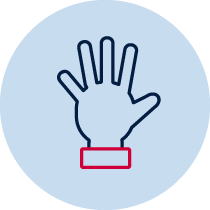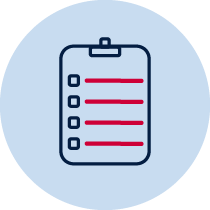Patterns and algebra – How many patterns?
Students Investigate and describe number patterns formed by skip counting and patterns with objects.
 |
 |
 |
 |
 |
| Practical | Resource required | Verbal recording | Take photo | Teacher observation |
Number and algebra – patterns and algebra 1
- describes mathematical situations and methods using everyday and some mathematical language, actions, materials, diagrams and symbols MA1-1WM
- uses objects, diagrams, and technology to explore mathematical problems MA1-2WM
- creates, represents and continues a variety of patterns with numbers and objects MA1-8NA
Content
Investigate and describe number patterns formed by skip counting and patterns with objects (ACMNA018)
Linked syllabus content
Whole numbers 2- investigate number sequences, initially those increasing and decreasing by twos, threes, fives and tens from any starting point, then moving to other sequences (ACMNA027)
Addition and subtraction 2- represent and solve simple addition and subtraction problems using a range of strategies including counting on, partitioning and rearranging parts (ACMNA015)
Multiplication and division 1 - skip count by twos, fives and tens starting from zero (ACMNA012)
National Numeracy Learning Progression mapping to the NSW mathematics syllabus
When working towards the outcome MA1-8NA the sub-elements (and levels) of Quantifying numbers (QuN7), Multiplicative strategies (MuS2-MuS5) and Number patterns and algebraic thinking (NPA3-NPA4) describe observable behaviours that can aid teachers in making evidence-based decisions about student development and future learning.
Materials
- range of dominoes
- paper, pencils,
- recording device (optional)
Teacher instructions
The purpose of this task is to gauge students’ understanding of concepts such as identifying and describing number patterns
Students are given a large quantity of dominoes and are invited to explore the resource.
Students record their findings using paper, pencils, a whiteboard or use a recording device.
Take notes of any patterns students create, how they describe these and any links to mathematical sub-strands that may occur.
Student instructions
You need to explore the dominoes and see what you can create.
Can you tell me what you have made with your dominoes?
Enabling prompts
Can you make a different type of pattern with your dominoes?
Ask other students in the group what they notice about this student’s patterns.
Invite students to create a pattern that doesn’t focus on the domino colours or use plain dominoes if you know that students can already create colour patterns.
Extending questions
Describe how you made your pattern. What makes it a pattern?
Ask students to record their patterns on their paper, whiteboard or recording device.
Student: Ask someone in their group to copy, continue and describe their pattern.
Possible areas for further exploration?
Students:
- could not make any type of pattern using the dominoes such as coloured pattern
- made a colour pattern but could not extend this to a number pattern when prompted
- could create, record and describe the number patterns that they found
Where to next?
- Explicit teaching on sorting objects into smaller groups, then copying, continuing and creating patterns using objects MAeS1-8NA
- Explicit teaching on recognising, copying and continuing given number patterns that increase or decrease using dominoes, numeral cards, 100s chart for example.
Focus on the Mathematics syllabus content in Patterns and algebra 1 and 2 to build on prior learning, extend knowledge and skills and use a variety of resources and situations to ensure that students can apply their knowledge Mathematics K–10 | NSW Education Standards
· Mathematics Stage 2 Diagnostic tasks Patterns and algebra pp. 35
Teaching activities can be found on our website at Stage 1 – patterns and algebra
Please note:
Syllabus outcomes and content descriptors from Mathematics K-10 Syllabus © NSW Education Standards Authority (NESA) for and on behalf of the Crown in right of the State of New South Wales, 2012